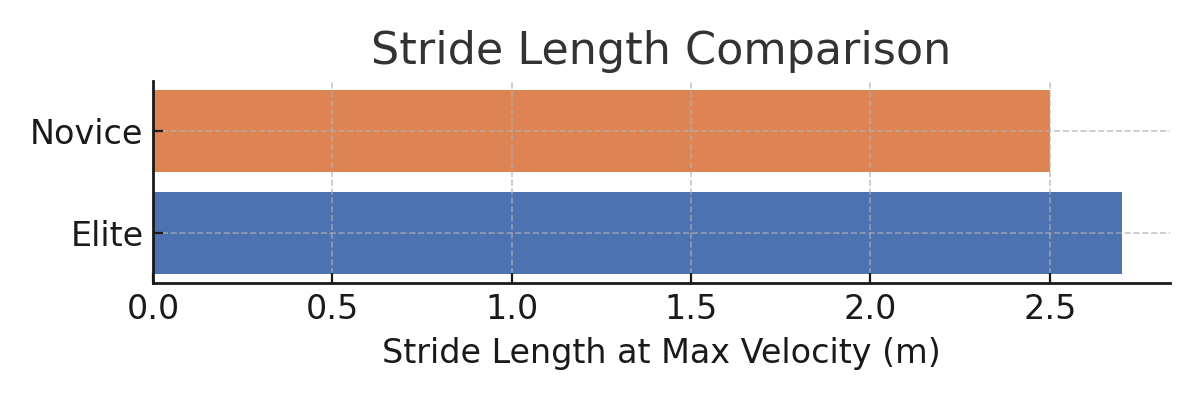This chapter addresses the development of speed, change-of-direction, and agility abilities. While these terms are often used interchangeably, they represent distinct physical capacities and skills due to differing biomechanical and cognitive demands. They are defined as follows:
Speed: The skills and abilities needed to achieve high movement velocities.
Change of direction: The skills and abilities required to explosively change movement direction, velocities, or modes.
Agility: The skills and abilities needed to change direction, velocity, or mode in response to a stimulus.
The ability to outrun the competition is a hallmark of most athletic endeavors. Being able to rapidly change direction is also a critical skill during gameplay, whether to evade opponents or to gain a tactical advantage.
Although many of these actions appear to involve “speed,” this term is nuanced and may stem from different qualities, including acceleration and technical skill. For instance:
Linear speed is typically expressed in sprinting.
Multidirectional speed appears in open-field play and involves changes in direction.
Generating high speeds is a foundational requirement in both track and field and team sports. However, while linear speed is vital for track events, success in multidirectional sports often depends on rapid and efficient changes of direction in response to dynamic scenarios.
Change-of-direction abilities require deceleration and reacceleration, usually in a pre-planned pattern.
Agility incorporates a perceptual-cognitive element, requiring athletes to change direction in response to an external stimulus (e.g., an opponent’s movement).
Acceleration is involved in both change-of-direction and agility, but each has unique technical and cognitive demands.
Key point: Speed requires the ability to accelerate and reach maximal velocity, whereas agility performance relies more heavily on perceptual-cognitive skills and decision-making.
| Training Group | Force at 300ms | Rate of Force Development (RFD) | Impulse Area |
| Untrained | Low | Low | Small |
| Heavy resistance-trained | Moderate | Moderate | Medium |
| Explosive-ballistic-trained | High | High | Large |
The Spring-Mass Model (SMM) is a mathematical framework that describes sprinting as a coordinated sequence of spring-like actions. During sprinting:
The leg acts like a spring that compresses at foot strike and extends during push-off, propelling the athlete forward.
The center of mass lowers during midstance, aligning with maximum spring compression.
This model illustrates how elastic energy is stored and released during running, emphasizing the role of muscle stiffness and tendon compliance.
Elite sprinters often produce more vertical force during the first half of ground contact.
As stride frequency increases, muscle stiffness becomes a critical feature of effective sprinting.
Change-of-direction and agility require more than just physical capabilities—they also demand:
Eccentric strength, especially for braking and reorienting the body.
Short ground contact times (e.g., 0.23–0.25 sec for agility vs. 0.09–0.11 sec for sprinting).
Stretch-shortening cycle (SSC) involvement during rapid reacceleration.
Perceptual-cognitive skills (e.g., decision-making, anticipation) to efficiently process tactical information.
Running speed = stride length × stride frequency
Key takeaways:
Sprinting includes repeated stride cycles: support (stance) + flight phases.
Speed increases by enhancing:
Stride length (longer ground coverage)
Stride frequency (faster turnover)
Elite sprinters:
Stride length ~2.70 m
Stride rate ~4.63 steps/sec
Novice sprinters:
Stride length ~2.56 m
Stride rate ~4.43 steps/sec
The interaction between stride length and frequency across various speeds.

Stride length comparison (elite vs. novice)

Stride rate comparison (elite vs. novice)

Sprinting consists of:
Acceleration phase
Maximum velocity phase
Coaches should emphasize:
Proper ground force application
Efficient transition between eccentric braking and concentric propulsion
Reduced ground contact times during acceleration
Start:
Athlete should distribute balanced body weight using a set position (blocks, 3- or 4-point staggered start).
Front lower leg angle: ~90°
Rear lower leg angle: ~133°
Legs generate ~905 N of force during start clearance (~0.28 s).
Vertical velocity is highest during block clearance and initial steps to elevate the center of gravity.
Key cues:
Exit angle of front leg during block clearance: ~160°
First step touchdown: ~0.5 m from start line
Initial velocity: up to 5 m/s
Acceleration:
Recovery leg should stay low; toes barely leave the ground.
Elite stride rate: 5.26 steps/sec; novice: 3.45 steps/sec
Elite stride length (first two steps): 1.13–1.15 m; novice: 1.21–1.50 m
Shorter stride = more frequent ground contact = better horizontal velocity
Ground time: elite ~0.123 s vs. novice ~0.223 s
By 20 m: sprinter should be nearly upright, with head rising at same rate as torso.
Maximum velocity:
Body alignment: shoulders stacked over hips over feet
Relaxed head/shoulders, eyes forward
Elite top speed: ~12.55 m/s vs. novice: ~11.25 m/s
Elite stride rate: 4.63 steps/sec; novice: 4.43 steps/sec
Elite ground contact time: 0.087 s vs. novice: 0.101 s
Early:
Midflight:
Late:
Early:
Continued concentric hip extension
Eccentric knee flexion + plantarflexion = shock absorption
Late:
| Error | Cause | Coaching Recommendation |
| Hips too high at start | Misunderstanding crouch | Adjust foot spacing and lower into start position |
| Stepping out laterally | Improper force direction | Cue pushing through the ground |
| Short/tight arm motion | Misunderstanding swing | Teach elbow drive and trunk rotation |
| Neck tension | Misunderstanding head posture | Cue head in line with spine |
| Premature upright posture | Weak push-off or bad posture | Cue trunk alignment and drive through the ground |
| Overstriding | Misunderstanding force application | Teach “run in their lane” and reduce ground contact |
| Cycling leg action | Improper force | Emphasize vertical force; reduce open gap during stance |
| Transverse arm errors | Fatigue or habit | Cue sagittal plane swing and proper alignment |
Sign up for free to take 10 quiz questions on this topic